It’s been a bumper year for fungi, the perfect foil for roll-your-own all-egg-pasta, in the pastures, woods and forests of the northern hemisphere. With this in mind, last week I travelled to the Botanic Gardens at Kew for a talk by biologist Merlin Sheldrake on his best-seller of 2020, Entangled Life, now newly illustrated, on a vast communication system of hair-fine filaments that links the mycelium, the root-system of fungi, with the trees on which it depends. This, a subterranean network of inter-species communication, provides information through shared nutriments, a sophisticated early-warning system the author identifies as the wood-wide-web (brilliant!).. Asked, by way of conclusion, what the scientist had learned that could be of use to the layman, he gave a very short answer: "Talk to each other."
Point taken. Meanwhile, of the many varieties of edible fungi available in the wild (rather than tame and grown in a bag), the most sought-after in Old World woods and pastures in autumn are (in no particular order):
Agaricus campestris/augustus/macrosporus/bisporus (field mushroom,champignon). A. bisporus is the parent of the cultivated varieties first grown in caves near Paris, and so often known as “champignon de Paris”. Button mushrooms, sliced and marinated in olive oil and lemon-juice, make an excellent antipasto. When I lived in Andalusia, gypsy children gathered and sold the big black-gilled A. macrosporus that appeared that popped up overnight after rain on hillsides blackened by bush-fires. Good for drying, sliced and if picked on a dry day.
Amanita caesaria: (UK: Caesar's mushroom; Italy: ovolo (because it looks like an egg when young); Basque: ous de reig; Catalan: oronja.) Fetches very high prices in Basque markets, Catalunia and northern Italy. Firm, white fleshed, keeps its shape and texture when cooked. Slice (no need to peel), fry gently in a little olive oil with a few slivers of garlic and serve heaped on toasted ciabatta, for instance, or with pasta in any way you please. Delicious with scrambled eggs or a a frittata. Not a drying-mushroom. p.s. be careful with identifying - the Amanitas are tricky and there are several baddies in there, particularly when young and egg-like.
Boletus edulis (Italy: porcini; France: cepe, Spain: seta; German: steinpilz; UK: penny-bun). The obvious fungi for small boys to kick. Lumpy, reddish-brown cap (only shiny when wet), underparts spongy, pale cream to ochre, stalk bulbous. Excellent in all its parts: cap is firm-fleshed and glaucous, spongy underparts are soft-textured and gluey; stem is fine-flavoured and floury. Holds its shape when cooked. Flavour nutty, chewy, with a pronounced woodland flavour and aftertaste. Particularly good grilled with a sprinkle of olive oil, salt, parsley and garlic. Popular all over the northern shores of the region, though the southern shores have someAfrican hybrids - take local advice. A friendly group of fungi: none are fatal, though one or two might give you a tummy-ache (particular the red-boled Devils Boletus - name's a bit of a give-away). Far and away the best mushroom for drying.
Cantharellus cibarius (France: chanterelle, girolle). Buttercup yellow with beautifully fluted gills, like a Gothic cathedral - the most visually appealing of all the fungi. Popular in northern Europe, particularly Scandinavia - in southern Europe, only the Provençaux value it highly. Chewy texture, flavour delicately peppery, blandif the weather has been wet. Said to have faint scent of apricots, although I think this must be more from the colour than the fragrance. Keeps colour and volume in cooking. Close relative, C. infundibuliformis (yellow-legs, also billed in French markets as chanterelle or girolle) is found in the same habitat but looks leggier, with thinner flesh and a dark cap on a yellow stalk. Both are good in ragouts and rice dishes. Can be dried, but not a patch on a penny-bun.
Marasmius oreades (France: mousseron; UK: fairy-ring mushroom - bearng in mind that there are others, some of them bad news, that also grow in rings); tan to cream colour all over, distinctly mushroomy flavour, native to North America as well as Europe. The stalk is chewy so best removed when cooked fresh. A good fungi for drying as it’s small enough to dehydrate whole, and holds its flavour and shape: popular for winter soups and stews, particularly in Eastern Europe.
Hydnum repandum (UK: hedgehog or tooth-fungus; France: pieds-de-mouton). Cap white to yellowish with gills that look like tiny little teeth; colour white to pinkish. Squirrels go mad for it. Flesh white and meaty, flavour distinctly peppery, firm enough to hold its shape in the pan with no loss of its joyous woodland flavour. Gives a wonderful peppery kick to a fungi-mix. Gorgeous in an omelette, or combined with chanterelles in a quiche. Doesn't dry well.
Pleurotus eryngii (Spain: seta de cardo; Italy: cardoncello). A member of the oyster-mushroom family whose natural host- plant is the wild cardoon. Very sought-after in Catalunya and Puglia, where it's grown on straw to satisfy demand. As might be expected of an interdependent body, it takes its physical characteristics from its host: the cap is blue-grey, the flesh firm, texture chewy, flavour distinctly artichoke-ty. Excellent cooked in olive oil with garlic as a dressing for Puglia’s orecchiette, or included in a rice stuffing for artichokes or tomatoes or mild frying-peppers. Not good for drying.
p.s. Merlin Sheldrake’s Entangled Life, How Fungi Make our Worlds, Change our Minds and Shape our Futures - says it all, really - is just out in an illustrated edition. Unmissable.
p.p.s Beloved paid-subscribers will shortly be in receipt of three of my favourite fungi recipes involving pasta - what else?






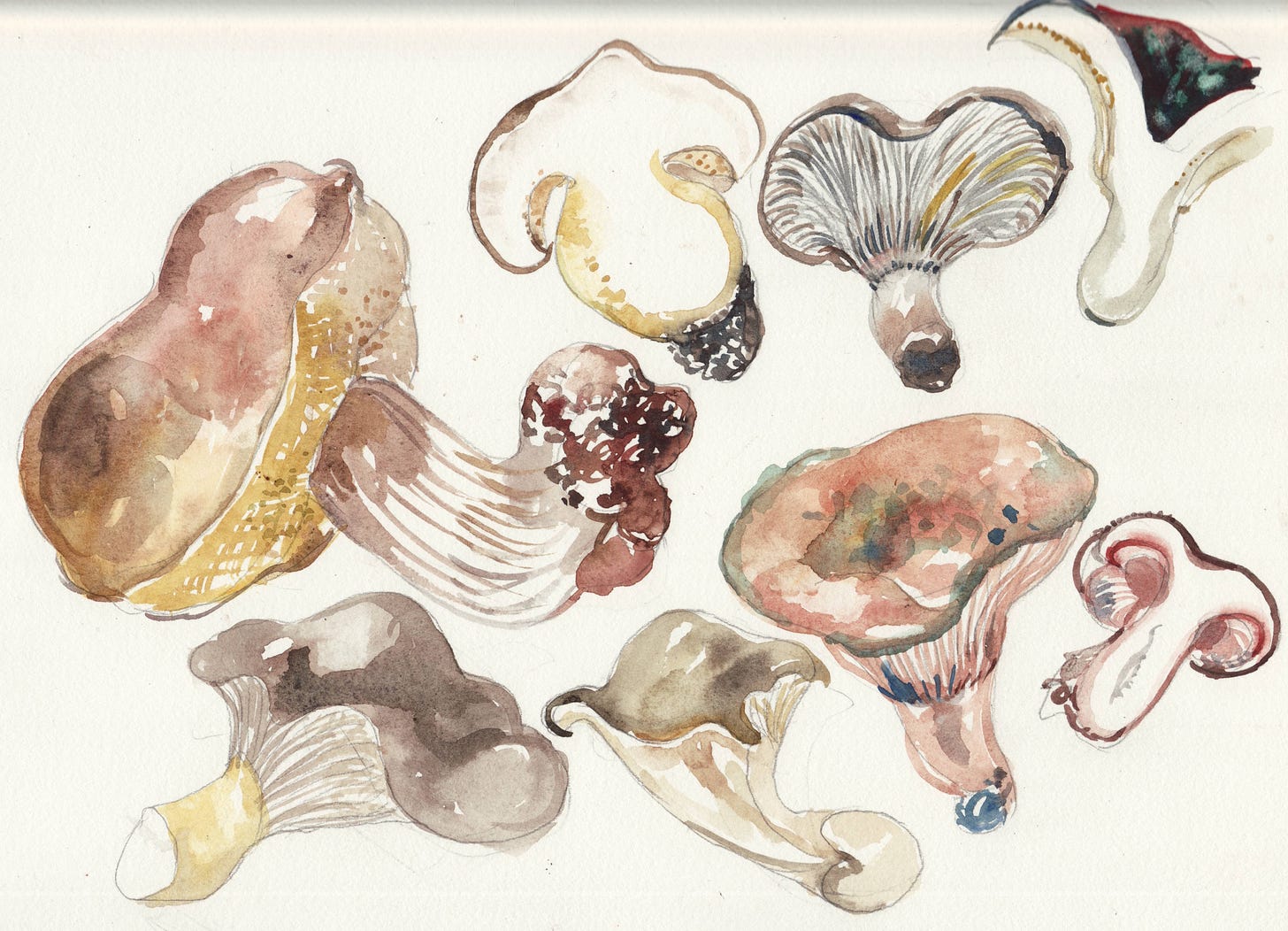

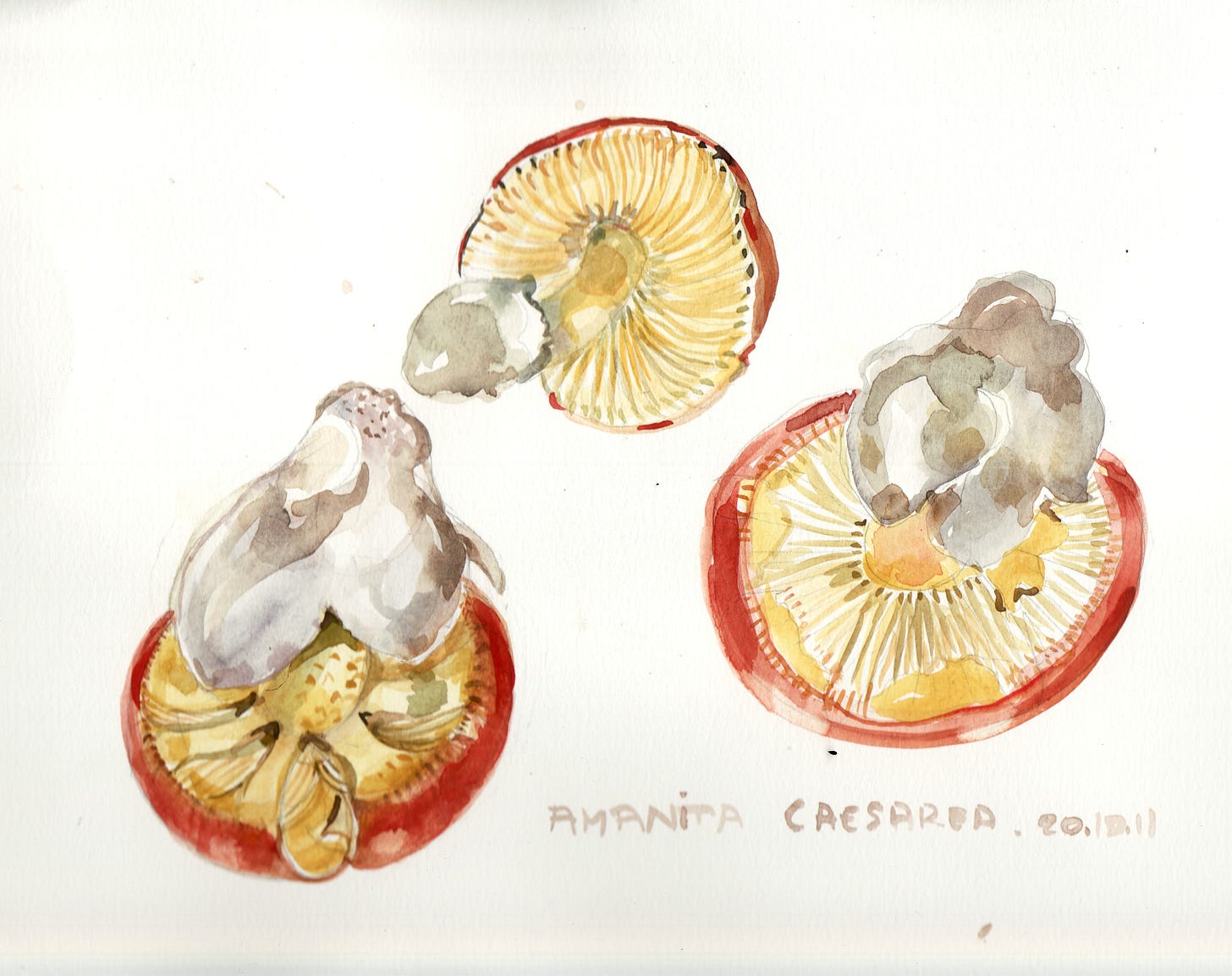
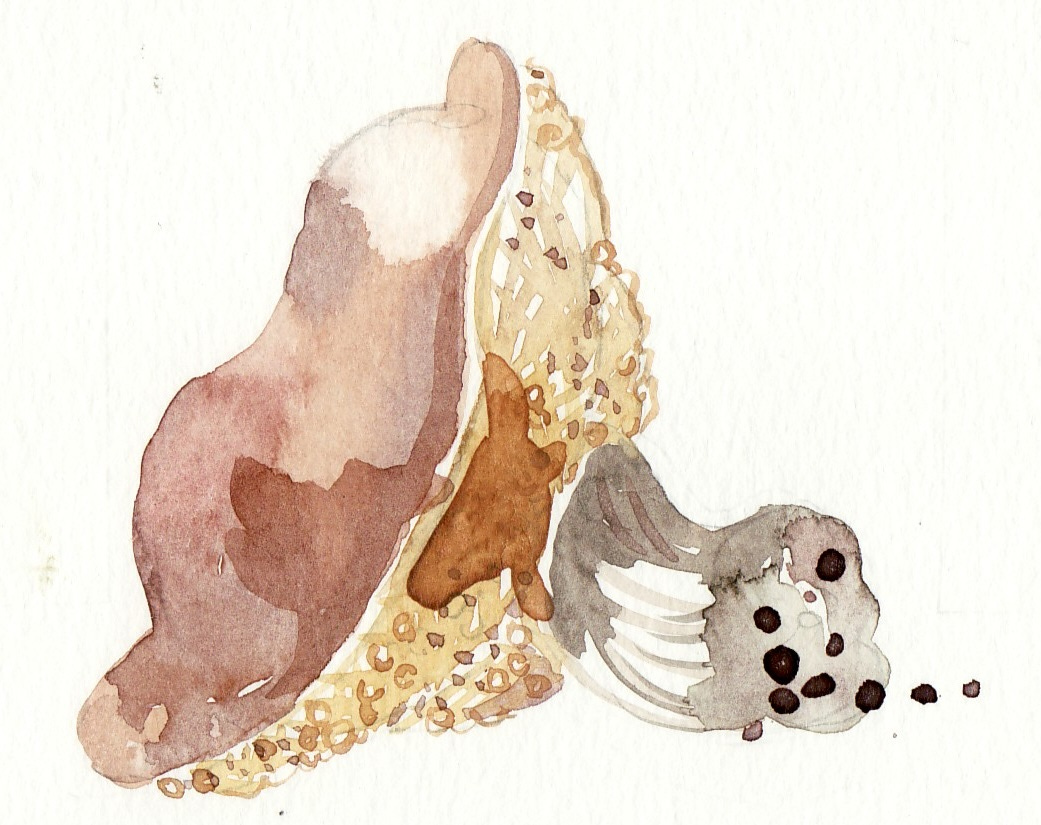
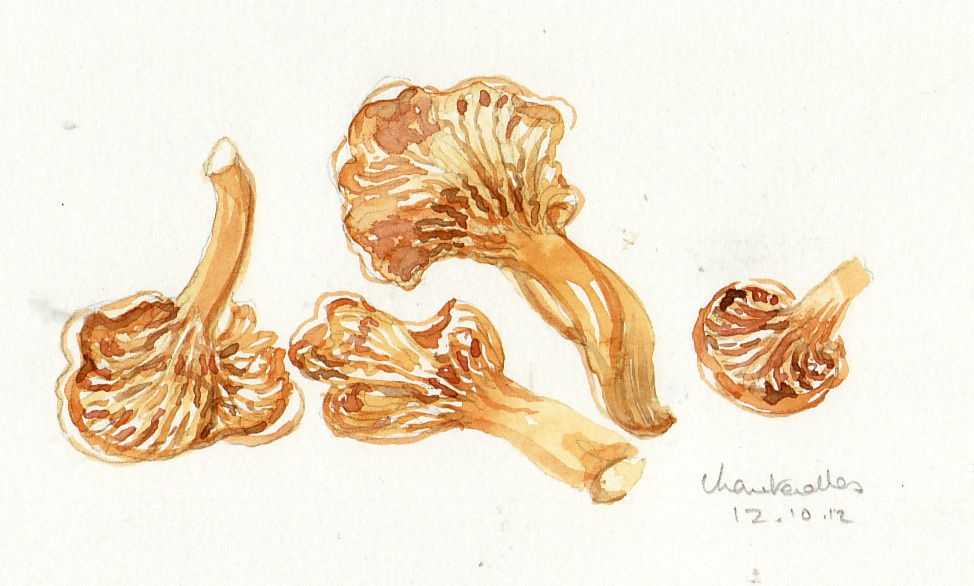

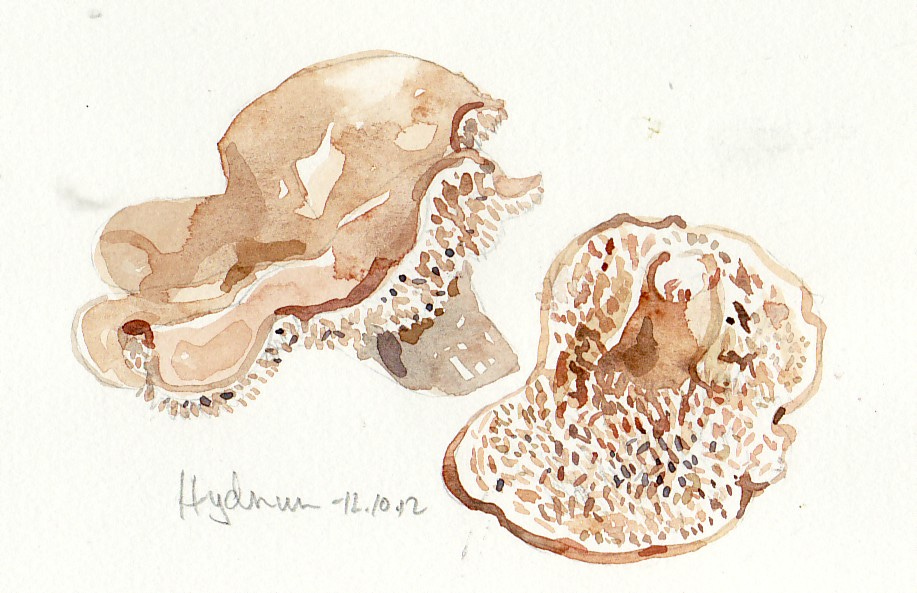

So glad to see you mention Merlin Sheldrake. That book is an eye opener. And thanks for all the fungal information. I would add a note of caution about that amanita, which, in its infant state, is responsible for unhappy experiences involving whole families at times. At least in Italy where perhaps people are a bit too cavalier about IDing the little eggs.
Right, you’re on foraging duty next week at the How to Cook a Book retreat 😉